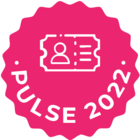Introduction
Cross-functional collaboration is not static—your teams need to evolve their approach to risk management based on real-world outcomes, customer feedback, and team performance. By continuously monitoring and refining your cross-functional collaboration strategies, you ensure that your risk management processes remain effective and aligned with customer needs. This article will guide you through how to refine and improve your cross-functional collaboration strategies using Gainsight’s tools.
Step 1: Monitor Collaboration Outcomes with Dashboards
Start by monitoring how well your teams are collaborating to manage customer risks:
-
Track Risk Resolution Performance: Use Dashboards to monitor how quickly and effectively risks are being addressed. For example, track the average time it takes for the Product Team to resolve product-related risks and how often the CS Team is engaging with at-risk customers.
-
Monitor Engagement Across Teams: Use dashboards to track cross-functional engagement. For example, ensure that both the Product Team and Sales Team are involved in high-impact risk reviews or escalation calls. This helps ensure that no risk management effort is siloed.
Dashboards provide real-time visibility into how teams are collaborating and how well risks are being managed.
Step 2: Gather Feedback from Teams and Customers
Use feedback from both internal teams and customers to continuously refine your collaboration efforts:
-
Collect Feedback from CSMs and Other Teams: Gather feedback from CSMs, Product, and Sales teams about the effectiveness of current collaboration processes. Use regular team meetings or structured surveys to understand where communication can be improved or where bottlenecks exist.
-
Incorporate Customer Feedback: Use Gainsight Surveys and NPS scores to collect customer feedback on how risks are being addressed. If customers feel that issues are not being resolved quickly enough, adjust your collaboration strategies to respond more rapidly.
Feedback helps you identify areas where cross-functional collaboration can be optimized for more effective risk management.
Step 3: Refine Playbooks and Collaboration Processes
Based on the feedback and performance data collected, refine your Playbooks and collaboration processes to improve efficiency:
-
Update Playbooks Based on Feedback: Use feedback from teams and customers to refine the steps in your Playbooks. For example, if the Product Team needs more detailed information when risks are escalated, update the playbook to include a standardized template for escalating product issues.
-
Streamline Communication Channels: If communication between teams is slow or unclear, consider implementing more direct communication channels like Slack or Teams integrations with Gainsight Notifications to ensure quicker responses.
Refining playbooks and communication processes ensures that your teams are working together more effectively and addressing risks faster.
Step 4: Iterate and Scale Cross-Functional Collaboration Strategies
As your company grows, continue to iterate and scale your cross-functional collaboration strategies:
-
Scale Collaboration for Growing Teams: As your company expands, ensure that cross-functional collaboration remains scalable by adjusting the size and frequency of team meetings or risk reviews. Use Dashboards to track whether larger teams are still working cohesively and efficiently on risk management.
-
Iterate on Risk Management Processes: Use insights from customer outcomes and feedback to iterate on your risk management strategies regularly. If certain processes are no longer working as your customer base grows, update them to better reflect current customer needs and team capabilities.
By continuously iterating on collaboration strategies, you ensure that your teams remain aligned and effective, even as your business scales.
Next Steps for Success
With continuous improvement strategies in place:
-
Monitor cross-functional engagement: Use dashboards to ensure that teams are collaborating effectively and that risks are being addressed in a timely manner.
-
Gather regular feedback: Use structured feedback from teams and customers to refine playbooks and communication processes, ensuring that collaboration stays efficient and effective.
Explore More:
-
eBook: The Essential Guide to Churn
-
Pulse Video: Mastering Risk Management
